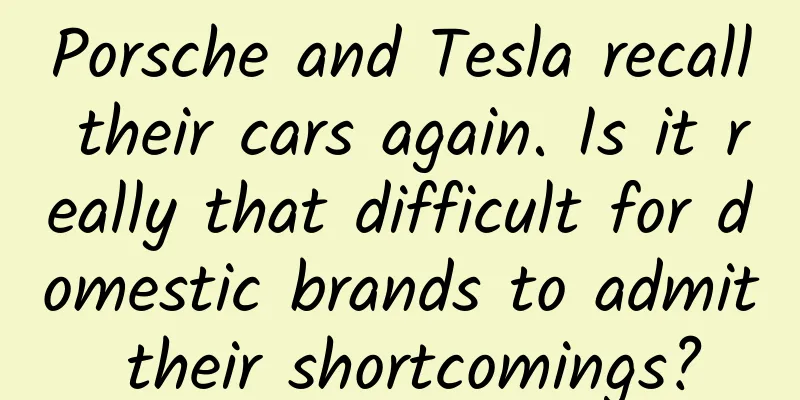Nissan, Honda and Mitsubishi have already started to band together for warmth. Our new car-making forces should be able to follow soon.

|
Under heavy pressure, Nissan and Honda are preparing to merge. Yesterday, the two parties signed a memorandum of understanding in Tokyo, officially starting merger negotiations and aiming to reach a final agreement in June next year. It is reported that Honda and Nissan will jointly invest to establish a holding company, and both parties will serve as subsidiaries of the holding company. After the merger, their respective brands will be retained. In addition, Mitsubishi Motors is also considering joining the group and will make a decision at the end of January next year. If this is implemented, the world's third largest automobile group will be born under operational pressure. According to Nissan's financial report for the first half of 2024 (March-September), global sales during the period were 1.596 million vehicles, a year-on-year decrease of 1.6%. Among them, the Chinese market was the hardest hit area, with a year-on-year decrease of 5.4%; net income was 598.42 billion yen, a year-on-year decrease of 1%; operating profit was 32.9 billion yen, a year-on-year decrease of 90.2%; net profit was 19.2 billion yen, a year-on-year decrease of 94%. There has been no significant improvement in global sales, and both operating profit and cash flow are negative. The situation is obviously not optimistic. The Financial Times once quoted a Nissan executive as saying, "Nissan has 12 to 14 months to survive." Honda's situation is similar to Nissan's. Its pre-tax profit in the first half of 2024 fell 15.6% year-on-year to 741.9 billion yen, and its net profit attributable to shareholders fell 19.7% year-on-year to 494.6 billion yen. Competition in the global auto market is intensifying, the proportion of new energy in the entire market is increasing, and the share of important markets is declining... Nissan and Honda are in a difficult situation. Even though few people are optimistic about the merger of the two, in this cold winter, is there any better way for them to embrace each other? The main purpose of company mergers is to reduce costs and increase efficiency, which can be immediately effective in at least three aspects: first, the bargaining and control capabilities of suppliers; second, the reduction of R&D, marketing and other expenses; and third, the cost advantages brought about by staff cuts. For example, in this merger, the three parties (including Mitsubishi Motors) demonstrated seven competitive strengths that will be optimized due to synergy in the future - gaining scale advantages by standardizing the two companies' vehicle platforms, seeking resource integration and synergy; improving R&D capabilities through integration; optimizing manufacturing systems and facilities; strengthening supply chain competitive advantages; improving operational efficiency; integrating financial modules to gain scale advantages; and establishing a talent base for intelligence and electrification. According to relevant forecasts, if the merger goes smoothly, the new joint venture will become a super car group with an annual sales target of more than 30 trillion yen (about 1.4 trillion yuan) and an operating profit target of more than 3 trillion yen (about 139.85 billion yuan). At the same time, the group's annual sales are expected to reach more than 8 million vehicles. Mitsubishi Motors also sees the potential of multi-party mergers. President Takao Kato pointed out that it is difficult to obtain a large amount of investment and development resources alone, and cooperation with Nissan and Honda is crucial to enhancing future competitiveness. Similarly, Nissan and Honda are far from the only two automakers that are facing difficulties in their current development. In terms of how to survive, the two automakers' actions of banding together for warmth may also be worth learning from for China's new car-making forces. In the past decade, hundreds of new car manufacturers have emerged in China, but only one or two of them have survived to this day. Most new car companies tend to ignore the construction of basic capabilities because they focus too much on speed and innovation in the early stage. Therefore, on the road to rapid rise, some car companies still have the reality of weak foundation and uneven strength. Jiyue, which collapsed a few days ago, is an example. When Jiyue was first established, it raised more than 5 billion yuan in financing, but it relied too much on external transfusions and failed to establish a stable profit model. Therefore, even though the driving experience of Jiyue Automobile was not bad and its intelligence level was online, it eventually suffered a flash crash due to various problems in management, marketing, funding, etc., and the failure to seek effective solutions in a timely manner. Among the new forces in China's car manufacturing industry, the cooperation between car companies and supply chains is relatively close. For example, the brands of Wenjie, Avita, Lynk & Co., etc. all have the shadow of cross-border cooperation. However, cooperation between car companies is very rare. Most of the time, the new forces in China's car manufacturing industry are fighting alone, and "mergers" are even seen as a precursor to the "failure" of the company. In fact, there are only a few new Chinese car-making forces that can provide self-sustaining services and have enough money. If they choose the right alliance partner, they can save R&D costs and strengthen their respective technological advantages, which will undoubtedly help improve their competitiveness. It is still unknown whether the "merger" between Nissan and Honda will be successful, but if their attempts are successful, it may promote the birth of a super car group. At that time, the landscape of the world's automobile industry will change. As the rising new forces in China's car manufacturing industry, perhaps they should also be prepared for danger in times of peace and learn from the merger ideas of Nissan and Honda. After all, tomorrow's market competition will only be more intense, and it will definitely be easier to survive by finding partners for mergers early than by fighting alone. The Chinese auto market is huge, but it cannot accommodate so many brands as it is now. Multiple ideas mean multiple paths. New forces should speed up their investigation into mergers. As a winner of Toutiao's Qingyun Plan and Baijiahao's Bai+ Plan, the 2019 Baidu Digital Author of the Year, the Baijiahao's Most Popular Author in the Technology Field, the 2019 Sogou Technology and Culture Author, and the 2021 Baijiahao Quarterly Influential Creator, he has won many awards, including the 2013 Sohu Best Industry Media Person, the 2015 China New Media Entrepreneurship Competition Beijing Third Place, the 2015 Guangmang Experience Award, the 2015 China New Media Entrepreneurship Competition Finals Third Place, and the 2018 Baidu Dynamic Annual Powerful Celebrity. |
Recommend
The first pig heart transplant recipient survived only 60 days! The Lancet published the reasons for the failure. Is there still hope for xenotransplantation?
According to new research published in The Lancet...
A universal method to improve operations and marketing conversion rates!
Previously, I shared that my favorite growth is r...
Event planning process summary and case studies!
1. Ideas for event planning 1. Five elements of e...
Japanese drama "Liar Game" full two seasons + movie version HD Japanese plug-in Chinese subtitles
Chinese name: Fraud game/Scam game Foreign name: ...
With a charging and discharging time of more than 6 hours, how can flow batteries achieve long-term energy storage?
□ Zhao Jialiang Recently, the Sichuan Provincial ...
Little Printf's Programming Story: Chapter 1
[[160813]] The original author, Fred Hebert, is a...
Can anti-blue light glasses protect your eyes and prevent myopia? Attention! Not everyone is suitable for wearing them...
Expert of this article: Li Zongou, Master of Opht...
Introduction to Yang Wanli: Has the ranking of optimized websites recovered?
The website optimization ranking in the second ha...
If you have a locust tree at home, you will have peace every year. Why is the reputation of Robinia pseudoacacia so high?
"If you have a locust tree at home, you will...
After using these features of Feishu, I uninstalled Word, Xmind, and OneDrive.
Similar to the social software track, after years...
Don’t take this kind of voice lightly! Some people are tortured every day…
Compiled by: Gong Zixin Do you live near the airp...
Do you think you can operate well just by reading the dry goods? Stop dreaming!
Just like I have heard a lot of truths, but I sti...
I believe my friends recommend Changsha to have a good place to drink tea with high quality selection and takeaway.
Changsha High-Quality Tea Tasting Audition (133~7...
Attosecond Science, the 2023 Nobel Prize in Physics: In-depth interpretation of experiments and theories
This year's Nobel Prize in Physics was awarde...
Pop Mart's entire private domain operation system
The case analysis brought today is the disassembl...









